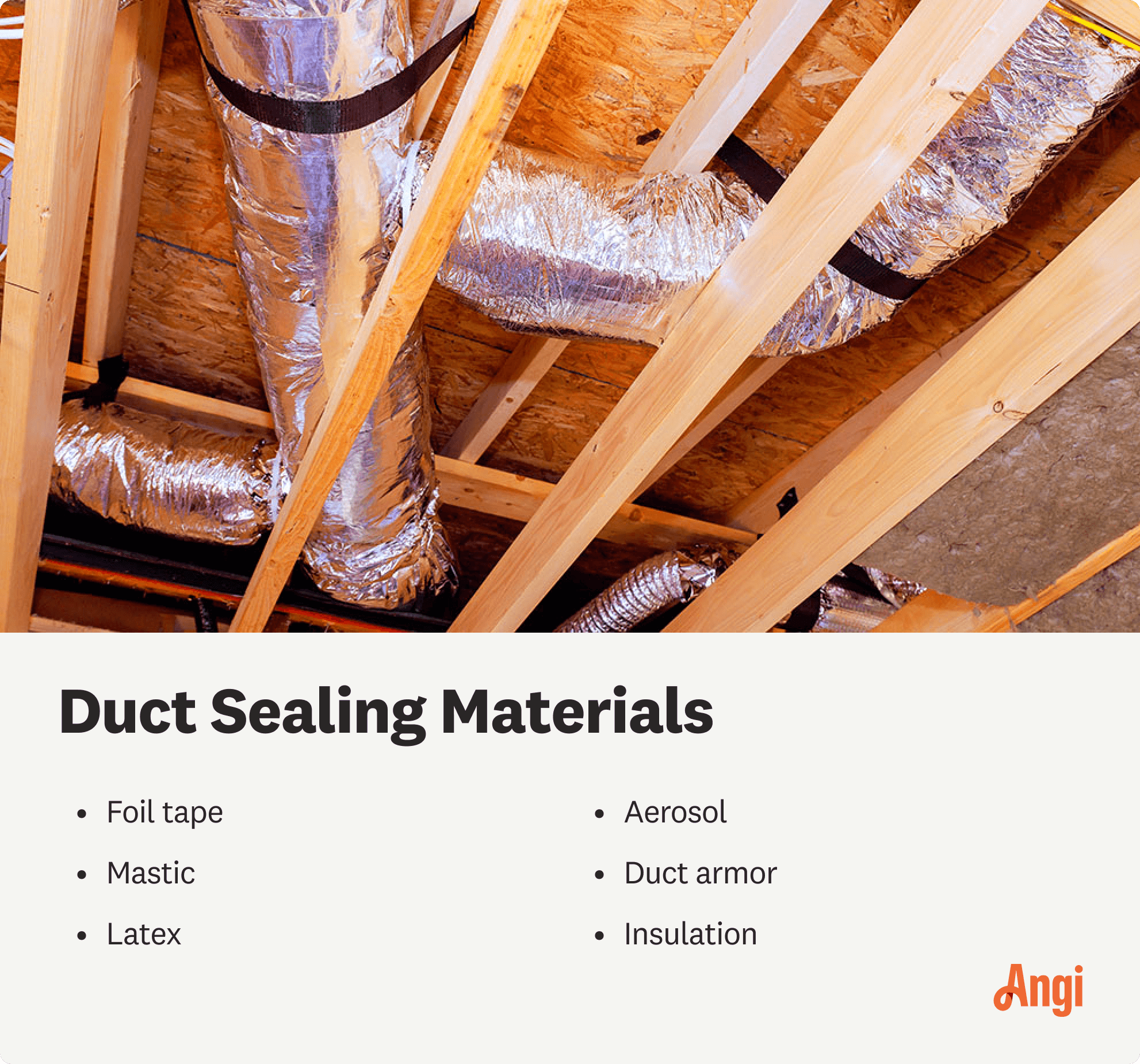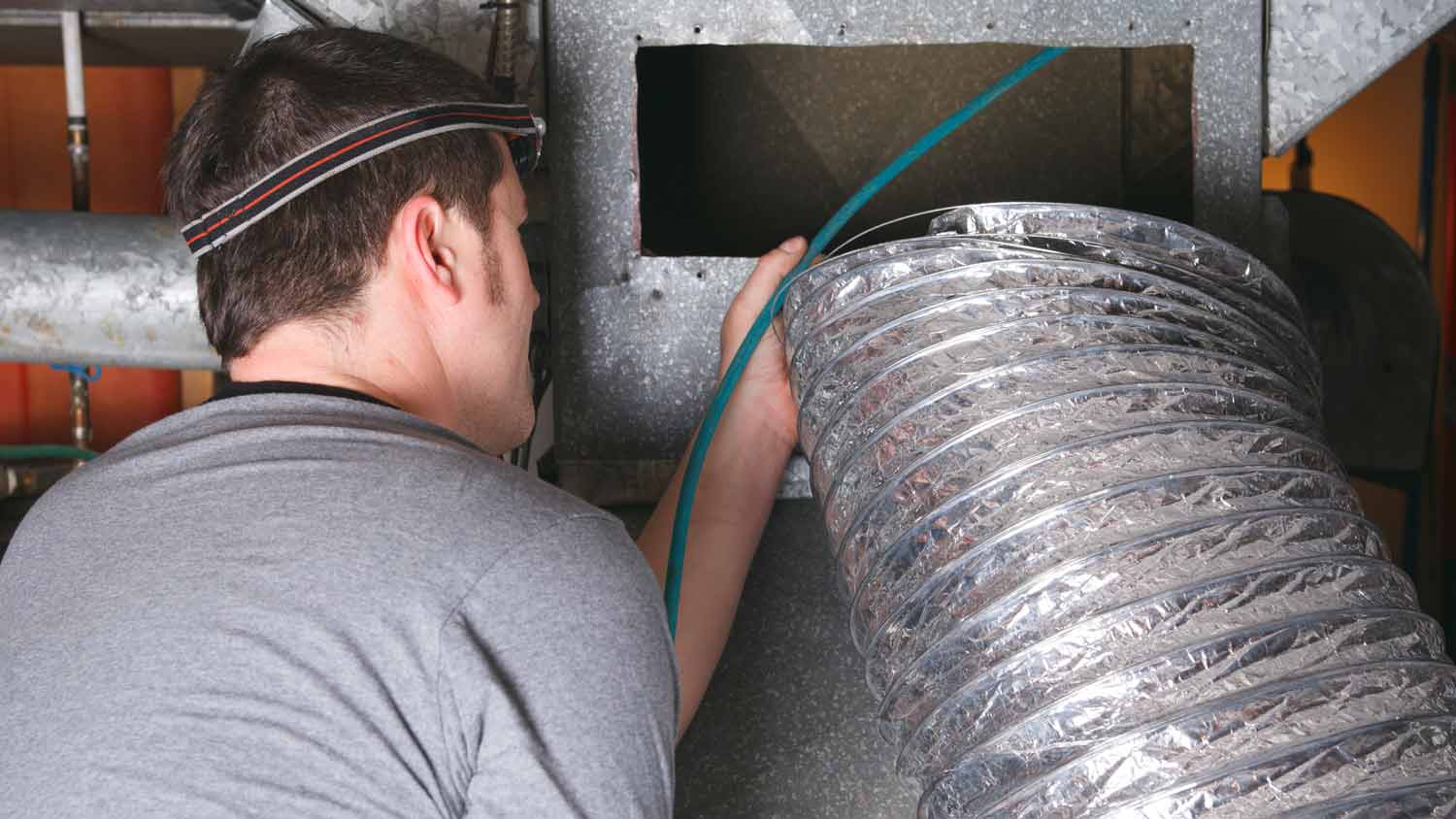
Whole-house air purifier costs depend on a variety of factors, including your home’s size and layout. The type of purifier you choose matters, too.
Don’t let rusty air ducts tarnish your home


Rust in air ducts can shorten their lifespan, so you’ll have to replace them sooner.
Regular maintenance and DIY fixes can help remove minor rust from your home’s ductwork.
A pro can advise you on the best action to take if your ductwork is significantly rusty.
Your HVAC system keeps your home at a comfortable temperature year-round. But if the metal ducts are exposed to water, they can develop rust. Rust in air ducts isn’t a cause for concern as long as you catch it early; left untreated, it can break down your ducts, shortening their lives and necessitating replacement sooner. This guide will teach you how to recognize rust, how to deal with rust in air ducts, and when to call a pro.
If you suspect you have rust in your home’s air ducts, schedule an HVAC inspection. A pro will check out the central unit and the ducts for mechanical issues that need repairs. For example, a frozen evaporator coil on an AC unit can cause water to leak into the ducts, causing rust. A pro can inspect the evaporator coil and repair or replace it to prevent the water leak. Expect to pay an average of $300 in HVAC inspection costs.
Cleaning your air ducts will allow you to evaluate the extent of the rust in the ducts. If the damage is minor, you can often get away with a thorough cleaning to remove rust from air ducts. However, if there’s significant rust damage in the ducts, you might need an air duct cleaning professional near you to replace parts of the ductwork. Either way, starting with clean ducts will let you plan the appropriate steps to deal with the rust.

If your air ducts aren’t properly sealed, moisture can get into the ductwork and cause rusting. Check your ductwork for any leaks where air can get in. If you find a leak, seal it with foil tape or duct mastic so it’s airtight. If you’re unsure how to seal the ducts, contact an HVAC pro to tackle the project.
If you live in a humid climate, your relative indoor humidity level could be above the maximum EPA-recommended level of 30% to 50%. High humidity levels in a home can cause moisture problems, including rust, mold, and mildew. A dehumidifier can help maintain a healthy humidity level in your home. Installing a whole-house dehumidifier costs $1,300 to $2,800 but could save you money in the long run.
A lack of insulation can cause condensation on the ductwork exterior, leading to rust. Insulating exposed ductwork is an easy DIY that can make a big difference. Simply wrap the duct’s exterior in rolled insulation and secure it with foil tape to keep it snug. You can also hire an insulation pro to do this job.
It may go without saying, but the most obvious sign of rust in air ducts is visible evidence. You might see rust on the air vents in one or more rooms or when you look through the vent into the duct.
Other signs are less clear. Since you can’t see all the way through your ductwork with the naked eye, you’ll need to look for evidence of water in the ducts. Listen carefully for any dripping sounds that suggest a potential rust-causing leak. Check for condensation near the HVAC unit’s evaporator coil that could be entering the ducts. And if you’re not sure whether you have rust in the ducts, schedule an HVAC duct inspection so a professional can look for signs of rust and other potential problems.

Minor rust damage in HVAC ductwork can be addressed with some simple DIY fixes, like sealing small leaks or adding insulation to the ducts’ exterior. However, you need a professional to address significant rust damage on your home’s air ducts. Here are some signs that rust in your air ducts is beyond your DIY skills:
Holes or gaps in the ductwork caused by significant rust
A musty smell that suggests the presence of mold as well as rust
The presence of water in the ducts
A lack of proper insulation on inaccessible ductwork
Evidence of a water leak in your HVAC unit
Very efficient, competent, pleasant, cleaned up, and gave good feedback. We will definitely recommend your company and the team that did the work.
Highly recommend Green City Pros for duct cleaning! Leroy did a thorough job, And the difference in air quality was noticeable immediately. I'd gladly recommend this company to anyone looking for quality air duct work.
While cleaning my air ducts the technician sprayed Kilz "the paint primer" into my vents and whether that's proper or not - they did not cover my furniture or floors and they splattered Kilz all over my brown sofa. I came around the corner and immediately saw the damage. They also got it on a...
They were a flawless go-between me and my insurance company. They thoroughly explained the process and took care of everything. They did a great job of cleaning up. I highly recommend them.
Very professional. And he took the time to clean up everything and moved furniture for me. Would absolutely use him again!
They are on time and they are clean.
Smoothly, flawlessly and on time. The team kept to their date and handled it amazingly. I will definitely call them in the future for any other HVAC needs.
Overall, the service once the tech arrived was great! I originally ordered this service as a "Angie's List Deal" so that I would get a discounted rate on the a/c tune up itself. When it was all said and done the service itself would have been cheaper had I not purchase the "Angie's List...
From average costs to expert advice, get all the answers you need to get your job done.

Whole-house air purifier costs depend on a variety of factors, including your home’s size and layout. The type of purifier you choose matters, too.

Curious about air duct cleaning costs? Get insights into pricing factors, benefits, and how to tell when it’s time for a good cleaning.

Learn why it's best to call the pros who know how to remove rust from air ducts and fix underlying issues rather than trying to handle this problem yourself.

Can dirty air ducts make you sick? Find out how dirty HVAC ductwork impacts indoor air quality and can even affect your health.

Can air duct cleaning cause damage to your home’s duct system? Yes, if it’s done incorrectly. Here’s how to prevent that from happening.

Perhaps you want to clean your ductwork but aren't sure when is the best time to clean air ducts. We'll explain everything to help you get on the right schedule.